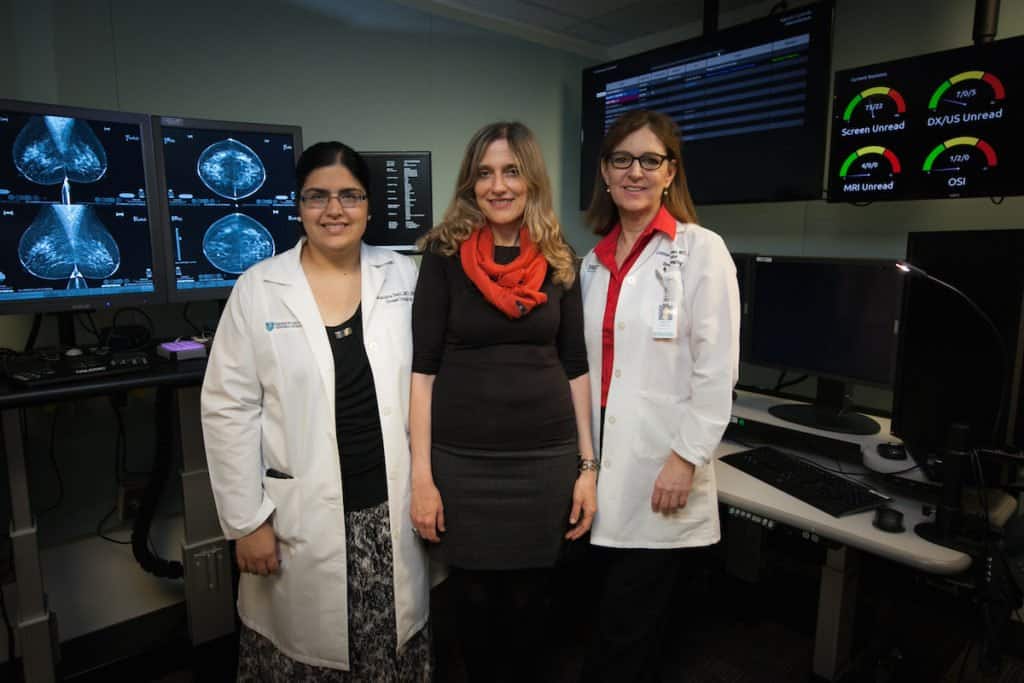New Machine Learning Tool Detects Breast Cancer Risk
In the US alone, 40,000 women die from breast cancer each year, but when cancers are found early enough they can often be cured.
Mammograms play a crucial role in detecting such cancers but they also throw up false positives, such as lesions that appear suspicious.
Once operated on, many such lesions turn out to be benign.
One common cause of false positives is so-called “high-risk” lesions that appear suspicious on mammograms and have abnormal cells when tested by needle biopsy. In this case, the patient typically undergoes surgery to have the lesion removed; however, the lesions turn out to be benign at surgery 90 percent of the time.
This means that every year thousands of women go through painful, expensive, scar-inducing surgeries that aren’t even necessary.
Study author and radiologist Manisha Bahl, M.D., M.P.H., from Massachusetts General Hospital (MGH) and Harvard Medical School, said: “There are different types of high-risk lesions. Most institutions recommend surgical excision for high-risk lesions such as atypical ductal hyperplasia, for which the risk of upgrade to cancer is about 20 percent. For other types of high-risk lesions, the risk of upgrade varies quite a bit in the literature, and patient management, including the decision about whether to remove or survey the lesion, varies across practices.
”Scientists from Massachusetts General Hospital and MIT’s Computer Science and Artificial Intelligence Laboratory (CSAIL) believe their new method can accurately screen high-risk lesions for breast cancer without requiring surgery to remove them. Machine learning lets artificial intelligence systems learn and improve on their own—without being explicitly programmed—once they’re given information to analyze.

The new model can detect cancer based on patient information, using a machine learning method called a random-forest classifier. In this method, researchers fed information on over 600 high-risk lesions—including details about the patient’s age and race, family history, past biopsies, and pathology reports—to an artificial intelligence. In trials, that artificial intelligence was able to interpret that data so effectively that the method resulted in fewer unnecessary surgeries and specifically diagnosed more cancerous lesions.
When tested on 335 high-risk lesions, the model correctly diagnosed 97 percent of the breast cancers as malignant and reduced the number of benign surgeries by more than 30 percent compared to existing approaches.
The team found that, had the model been used, it would have helped to prevent nearly one-third of the surgeries conducted on benign lesions. The machine-learning model also found that the keyword terms “severely” and “severely atypical” in pathology reports were associated with a greater risk of developing cancer.
“Because diagnostic tools are so inexact, there is an understandable tendency for doctors to over-screen for breast cancer. When there’s this much uncertainty in data, machine learning is exactly the tool that we need to improve detection and prevent over-treatment,” says Regina Barzilay, MIT’s Delta Electronics Professor of Electrical Engineering and Computer Science and a breast cancer survivor herself.
“Our goal is to apply the tool in clinical settings to help make more informed decisions as to which patients will be surveilled and which will go on to surgery,” Dr. Bahl said in the release. “I believe we can capitalize on machine learning to inform clinical decision making and ultimately improve patient care.” This is just one more example of how machine learning is transforming how we treat, manage, and prevent disease.
The next step will be to incorporate the actual images from the mammograms and images of the pathology slides into the model, as well as more extensive patient information from medical records.
The model could also be tweaked to be applied to other kinds of cancers and diseases.






























